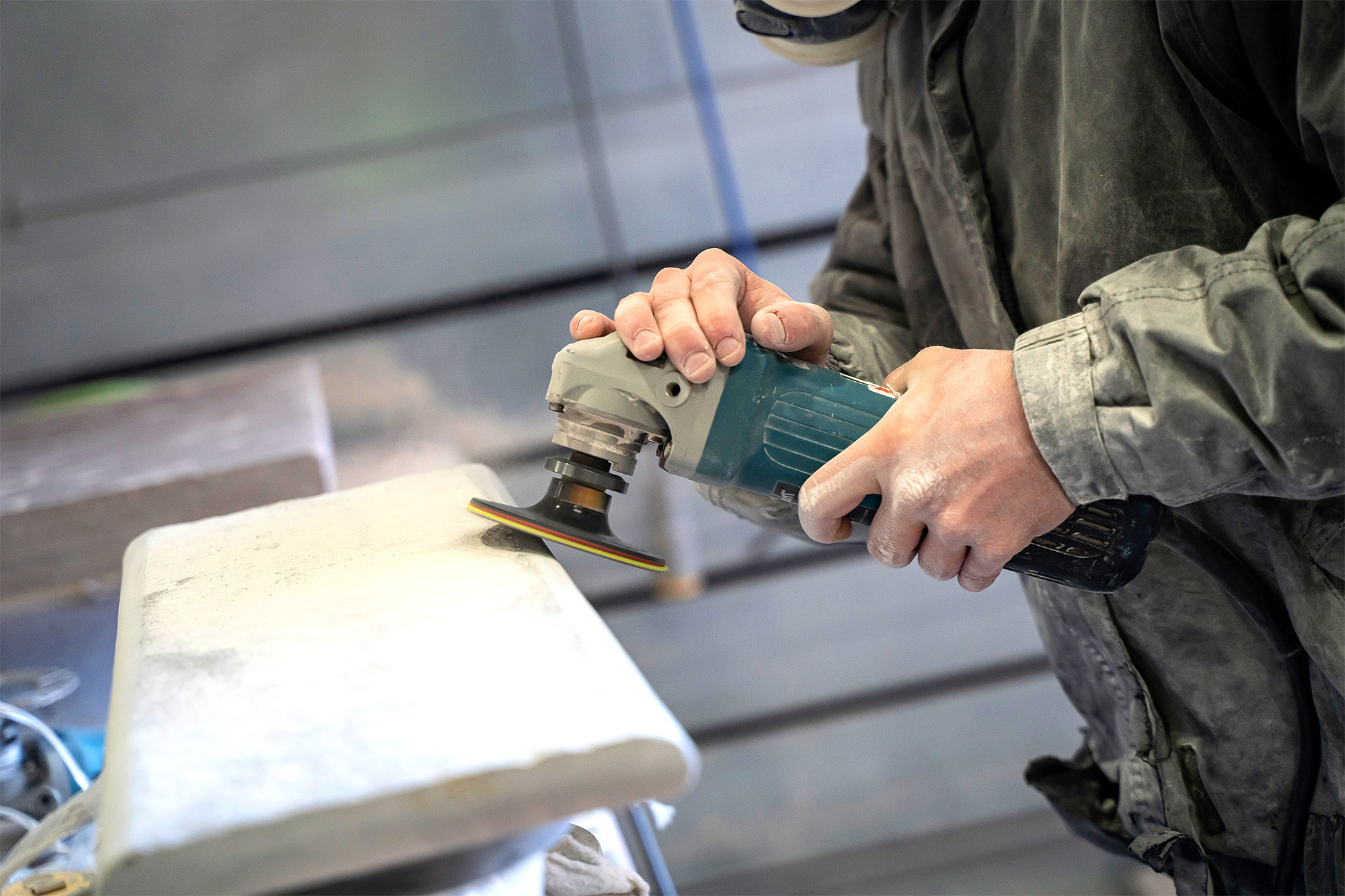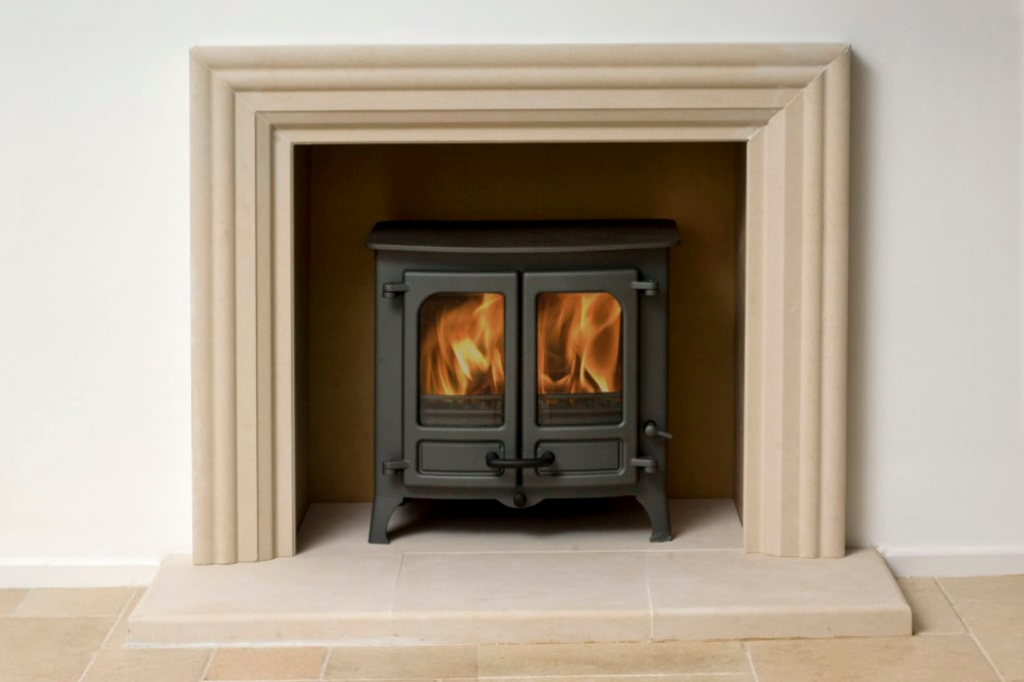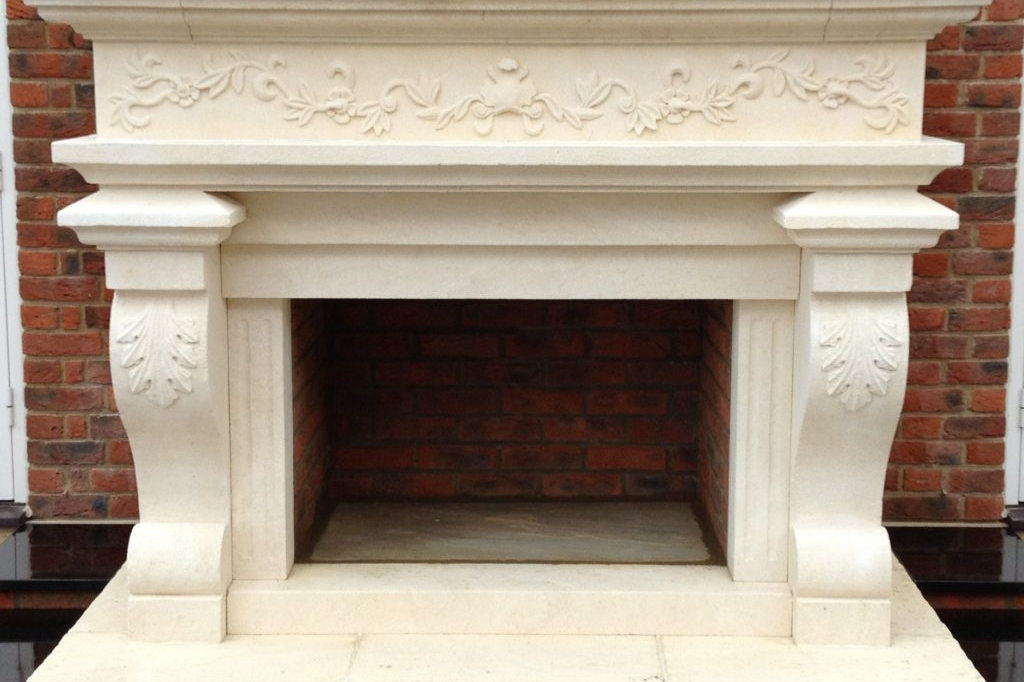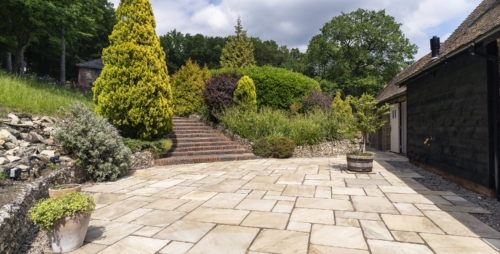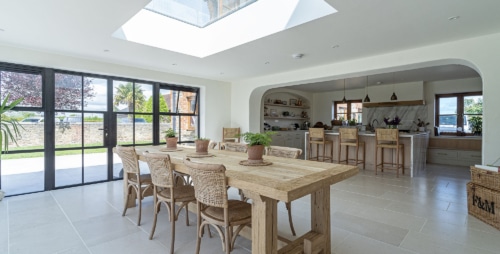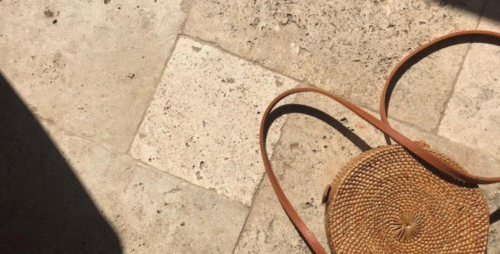A fireplace often serves as the heart of a home — a defining feature that brings warmth, style, and structure to any room. Unlike décor elements that change over time, a fireplace is a long-term investment, so getting the design and proportions right from the start is essential.
At Stoneworld, we work with you to design a fireplace that feels perfectly integrated into your space. Every project begins with accurate measurement and templating, followed by selecting the right natural stone or alternative material to match your interior and lifestyle. Careful attention to scale ensures the fireplace sits comfortably within the room.
Function and safety are just as important as appearance. Correct hearth sizing, flue positioning, and clearances ensure full compliance with building regulations, while thoughtful details — such as mantel depth, edge design, and hearth thickness — bring a refined finish. With appropriate sealing and ongoing care, your stone fireplace will continue to look exceptional for many years.
From concept to installation support and aftercare, our goal is simple: to create a fireplace that enhances your home, performs reliably every day, and remains a lasting feature for generations to come.
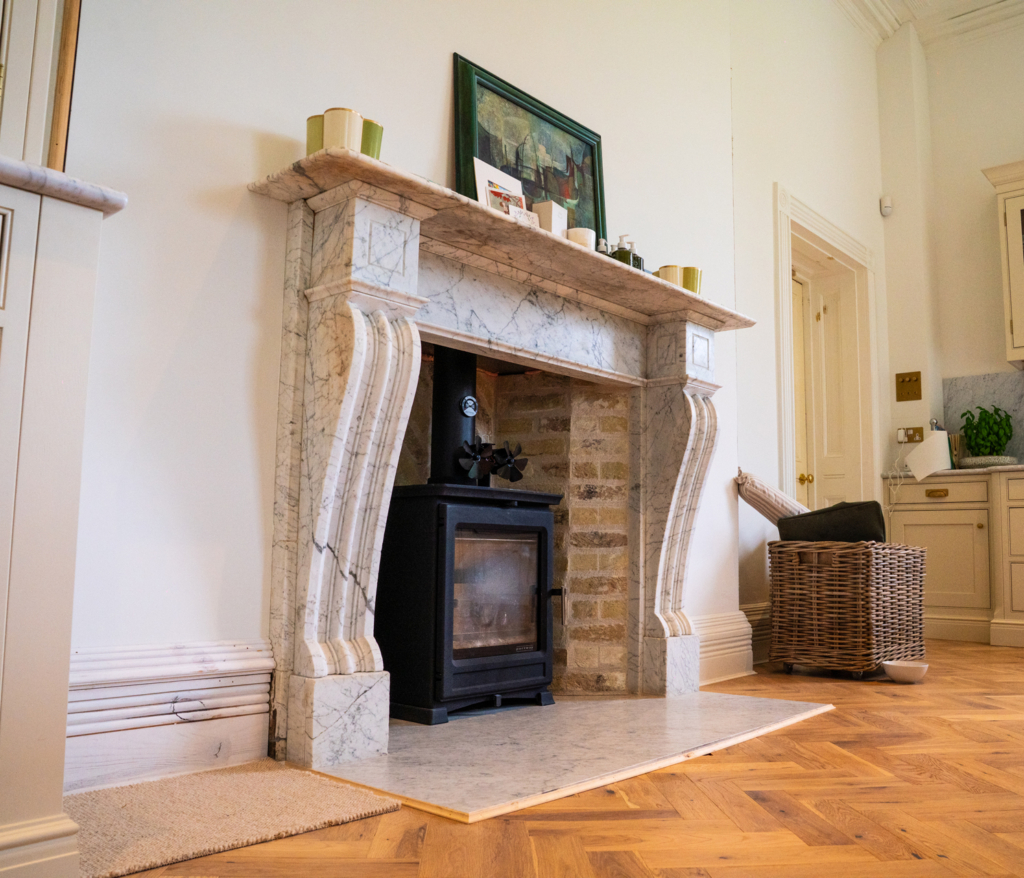
Step 1 – Templating
The foundation of a successful fireplace project is accuracy. Without precise measurements, even the highest-quality stonework can feel out of place.
We provide two options:
- Customer-supplied measurements – For straightforward rooms with flat, square walls, you can share detailed dimensions directly. We’ll guide you on the information needed to ensure everything is recorded correctly.
- On-site templating service – For more complex layouts, our specialists will visit to capture exact details. This is especially valuable where walls are uneven, corners are out of line, or the fireplace must work around alcoves, skirting, or panelling.
On-site templating does more than just measure. It allows us to identify and plan for fitting challenges in advance. Subtle issues — like a floor that slopes or a wall that leans slightly — can then be built into the cutting plan, ensuring the finished fireplace surround fits neatly and enhances the room as intended.
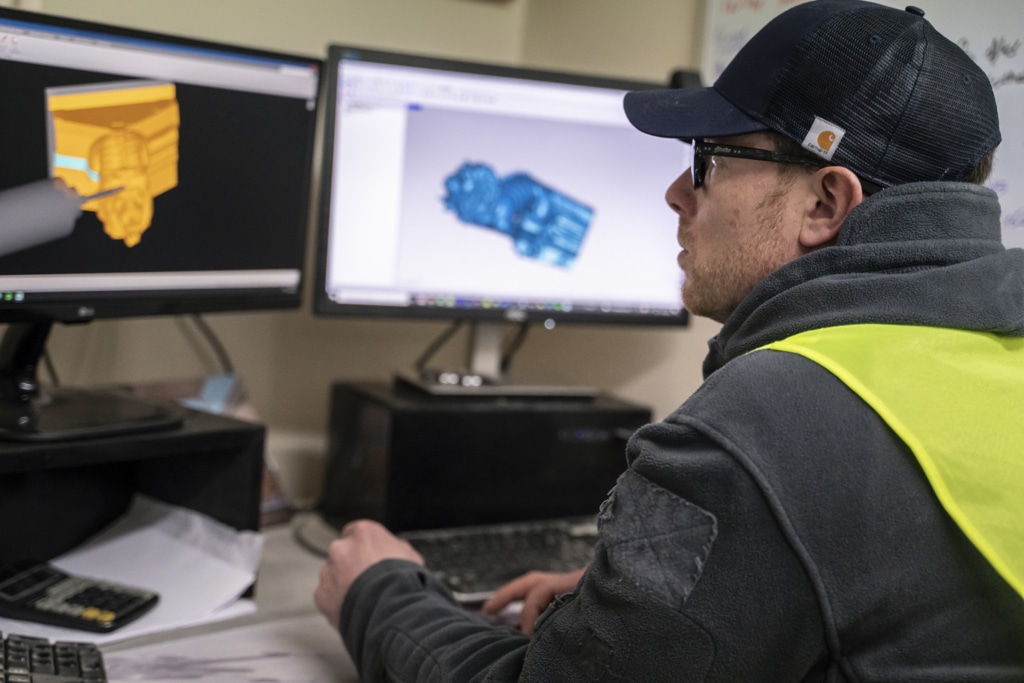
Step 2 – Choosing the right fireplace material
The stone you choose sets the mood of the room and influences how your fireplace performs over time.
- Limestone – soft, natural, and understated. Works beautifully in cottages, farmhouses, and light, neutral interiors.
- Sandstone – textured and warm, adding rustic depth and variation. Ideal for character homes.
- Marble – elegant and refined, often patterned with veining that makes it the star of the room. Best in formal living areas.
- Granite – robust and polished, perfect for contemporary interiors or homes where durability is critical.
- Engineered stone – consistent in tone and available in colours nature can’t provide. Reliable for precise, uniform finishes.
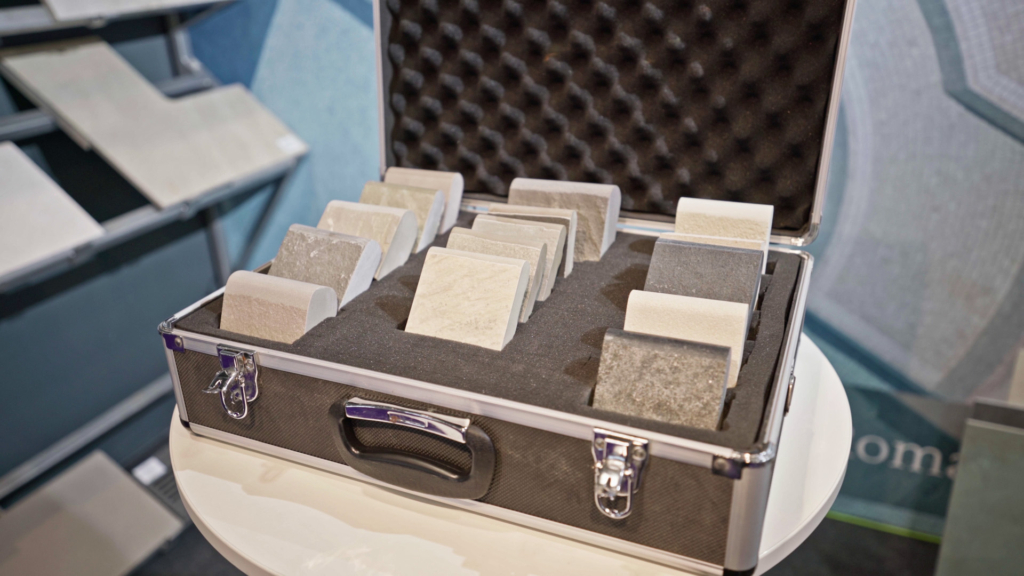
Selecting the right stone is about more than appearance — it also influences maintenance and longevity. For instance, limestone and sandstone are naturally porous and perform best when properly sealed, while marble is less absorbent but can develop subtle soot markings over time. Whenever possible, view large samples in natural light rather than relying on small swatches — it’s the most accurate way to understand how the stone’s colour and texture will look in your setting.
Step 3 – Design options
Once the stone or material has been chosen, it’s the design elements that shape the overall character of your fireplace. Every detail influences the finished look:
Hearth design – single-slab hearths create a sleek, contemporary base, while multi-piece hearths offer flexibility for larger layouts or decorative patterns.
Surround proportions – taller surrounds emphasise grandeur and formality, whereas wider, lower surrounds bring a relaxed, modern look to contemporary living rooms.
Edge profiles – from subtle pencil rounds to deep ogee carvings, edge finishes dramatically affect the style.
Mantels and shelves – add a functional ledge for artwork, mirrors, or seasonal décor.
Carving and moulding – from simple chamfers to intricate hand-carved designs, our skilled stonemasons can produce bespoke surrounds tailored to your home’s architecture.

We create scaled drawings to help you visualise your choices, ensuring that when the stone is cut, it matches your expectations precisely.
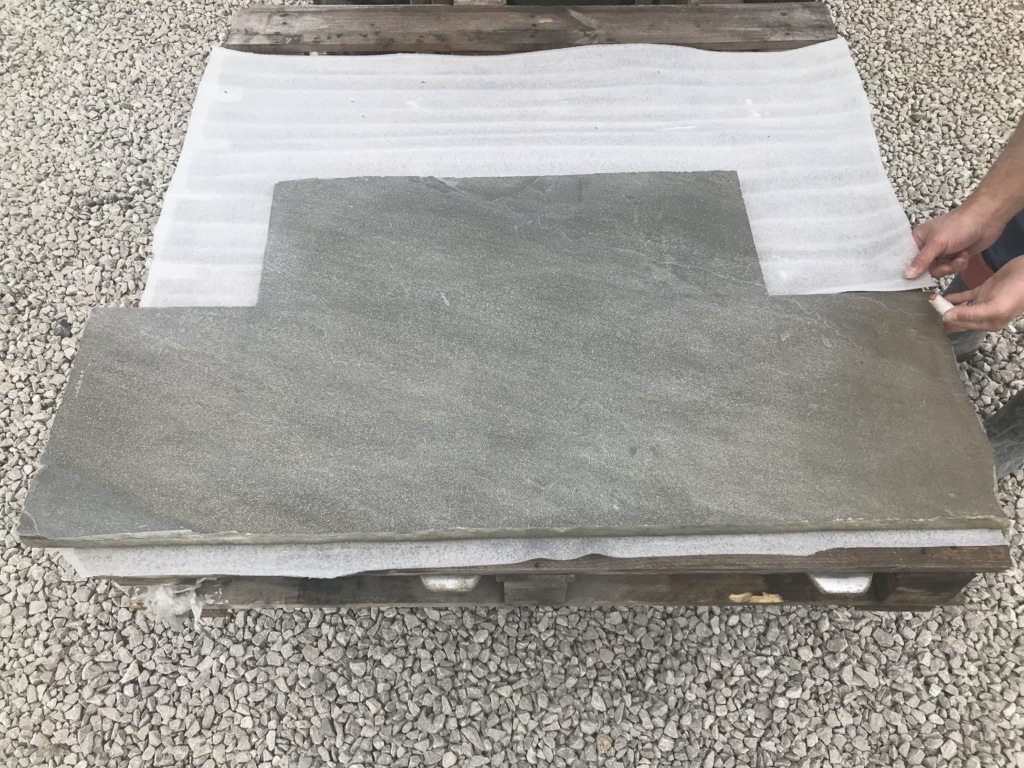
Brand‑New or Showroom Inspiration
Step 5 – Maintenance and Aftercare Support
Fireplaces for Stoves, Gas Fires, and Open Fires
A thoughtfully designed fireplace doesn’t have to centre around an open fire. It can be created to suit a wood-burning stove or a gas fire, provided the layout, flue configuration, and clearances are planned from the start. This approach ensures the fireplace remains visually balanced, operates safely, and feels in proportion with the room.
Each fuel option offers its own distinct appeal. A wood-burning stove delivers a timeless aesthetic and powerful, radiant heat. A gas fire combines convenience with efficiency, offering instant warmth at the touch of a button. Meanwhile, an open fire continues to evoke a traditional charm, celebrated for its natural glow and the crackle of real logs.
With careful planning of the hearth, surround, and overall dimensions, your fireplace can be perfectly tailored to the fire type you choose — creating a statement feature that reflects both your home’s character and your way of living.
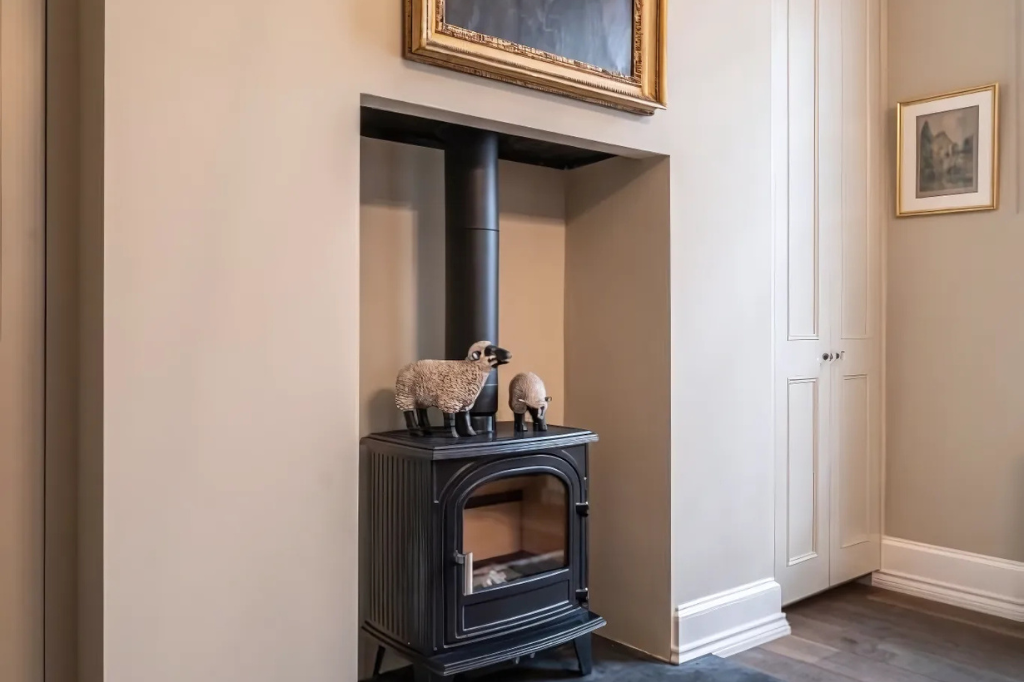
Can I Install a Fireplace Without Having an Existing Chimney?
Yes — a fireplace can be installed even if your home doesn’t already have a chimney. Modern systems allow for flexibility, using twin-wall flue pipes or specialist flue arrangements that vent safely through an external wall or roof. This means you can still enjoy the look and warmth of a fireplace without traditional chimney infrastructure.
The type of fire you choose will affect the requirements. Wood-burning stoves and some gas fires need a properly designed flue system to remove smoke and gases, while electric fires do not require a flue at all. During the design stage, it’s important to consider where the flue will run, how it integrates with your fireplace surround, and whether any additional support or insulation is needed.
With the right planning, even homes without chimneys can incorporate a fireplace that feels authentic, safe, and proportionate to the room.
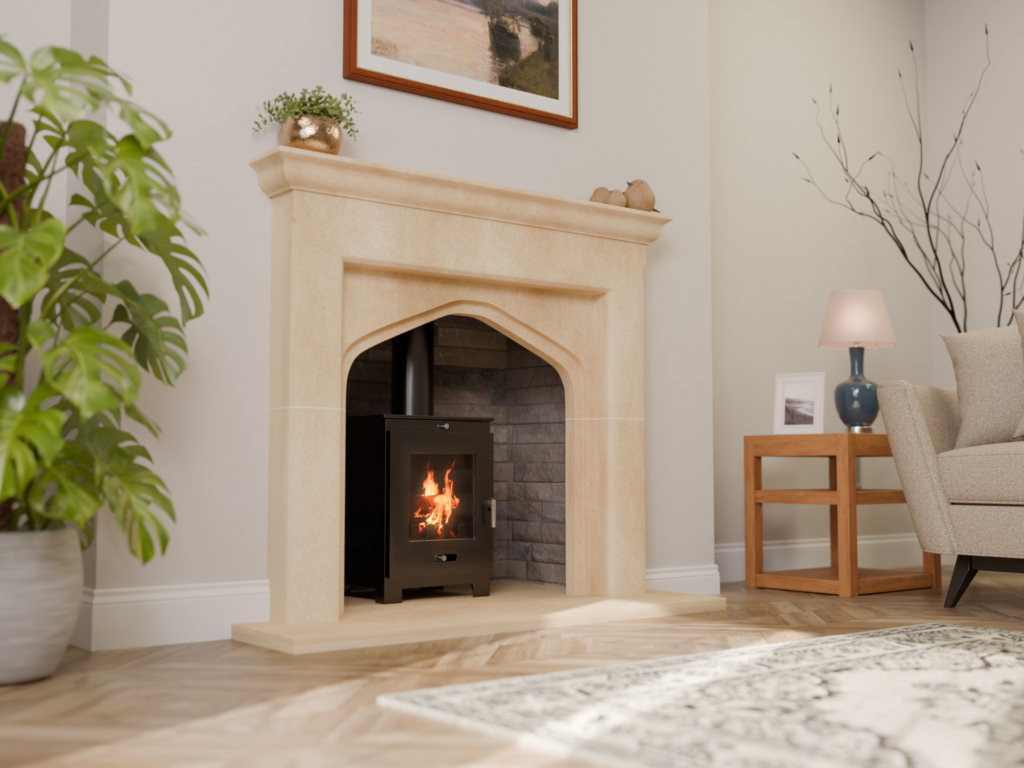
How much does a natural stone fireplace cost?
The cost of a fireplace depends on several factors — including the choice of stone, overall size, level of design detail, and any additional structural work required, such as flue lining or chimney modifications. Below is an approximate guide to typical UK pricing to help you plan your project.
Final Thoughts
If you would like to talk to us about creating your perfect fireplace or hearth, you can call us on 01844 279274 or email us at sales@stoneworld.co.uk. For advice on how to clean and care for your stone, visit www.robparkersbest.co.uk
Alternatively, you can fill in our enquiry form and one of our team will get back to you shortly to discuss your project.


